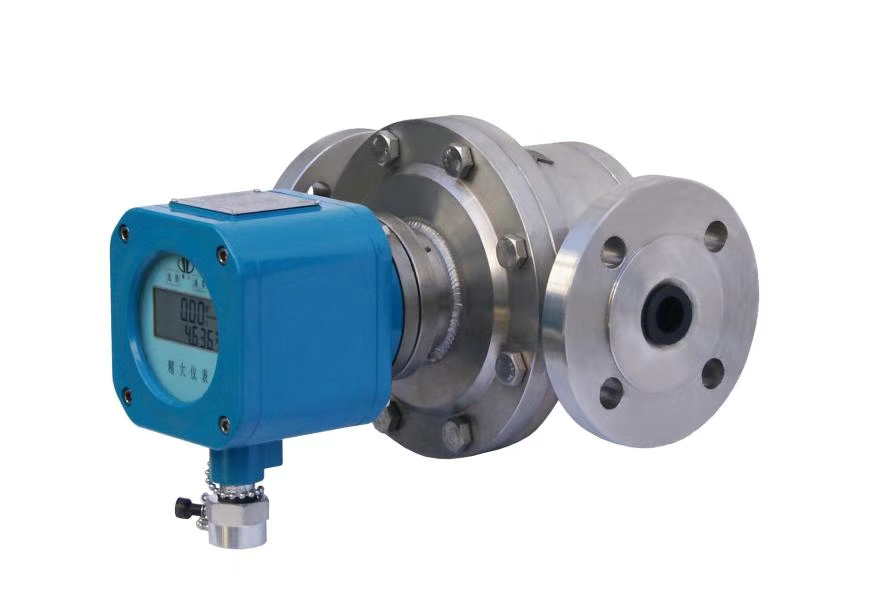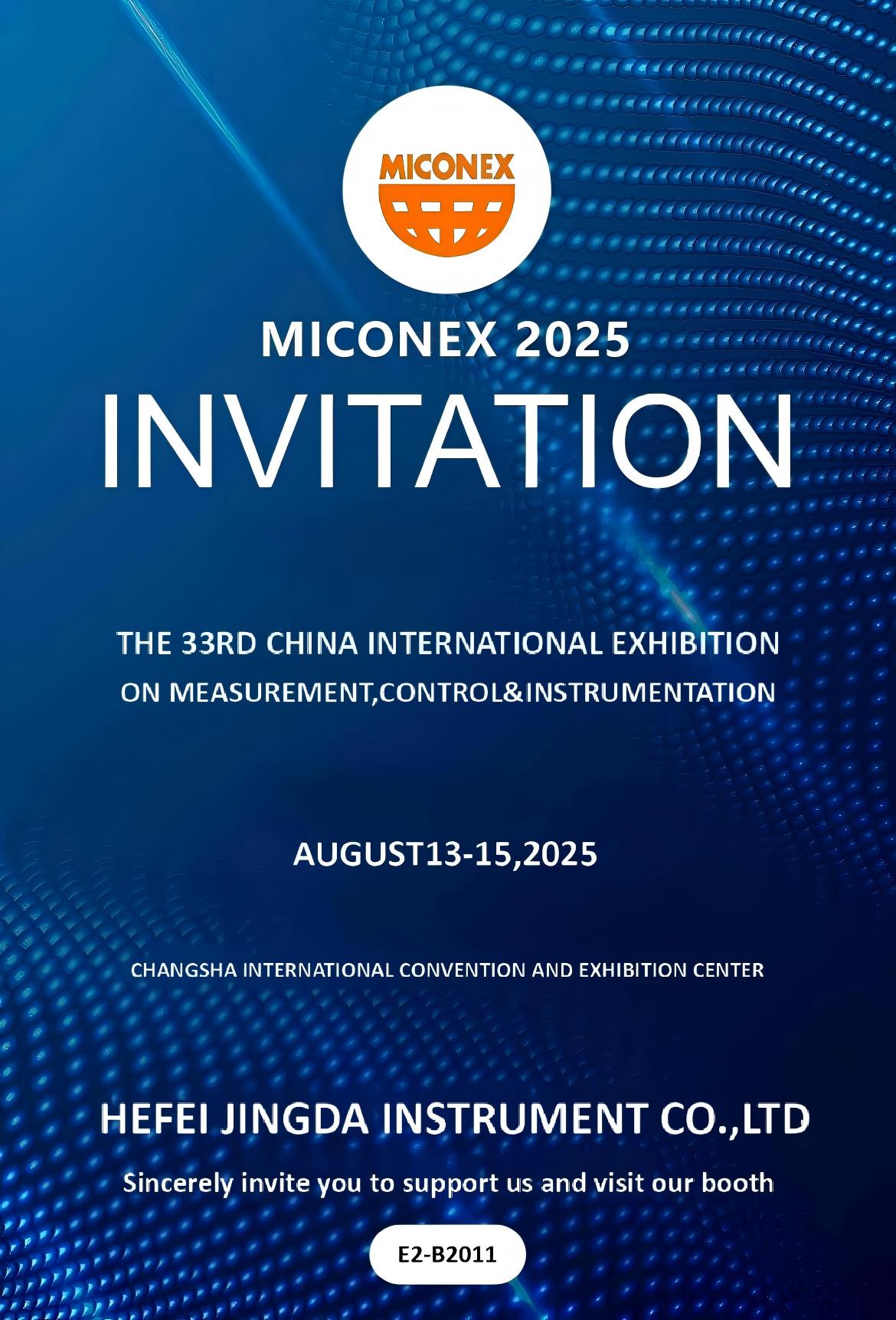고온 및 고압 환경에서 액체 유량계의 적용 과제 및 솔루션
출시일: 2025-07-30
액체 유량계 액체 유량계는 산업 공정에서 유체 유량 측정 및 제어를 위해 널리 사용됩니다. 그러나 고온 및 고압 환경에서 작동할 경우, 이러한 유량계는 여러 가지 어려움에 직면합니다. 극한 환경에서는 유량계가 더 높은 안정성, 정확도, 그리고 내구성을 갖춰야 합니다. 적절하게 설계 및 유지관리되지 않으면 이러한 조건들이 측정 정확도에 영향을 미치고 심지어 장비 고장으로 이어질 수 있습니다. 따라서 고온 및 고압 환경에서 액체 유량계가 직면하는 어려움을 이해하고 적절한 해결책을 모색하는 것은 산업 공정의 원활한 작동을 보장하는 데 매우 중요합니다.
과제 1: 고온이 유량계 성능에 미치는 영향
고온 환경은 액체 유량계의 재료와 전자 부품 모두에 영향을 미칠 수 있습니다. 온도가 유량계의 작동 한계를 초과하면 센서의 정확도가 떨어져 측정 오류가 발생할 수 있습니다. 또한, 고온은 유량계 내부 액체의 점도를 변화시켜 유량 측정 정확도에 더욱 영향을 미칠 수 있습니다. 와류식 유량계나 전자기식 유량계와 같은 일반적인 유량계의 경우, 센서의 온도 한계가 이러한 한계를 초과하면 성능 저하 또는 고장으로 이어질 수 있습니다.
해결책: 고온 내성 소재와 첨단 열 보상 기술을 사용하는 것이 효과적인 해결책입니다. 예를 들어, 유량계는 세라믹, 고온 합금, 특수 플라스틱과 같이 뛰어난 열적 특성을 가진 소재를 사용하여 제작할 수 있습니다. 또한, 열 보상 기술을 설계에 통합하면 센서의 안정성과 정확성을 유지하는 데 도움이 될 수 있습니다. 석유화학 및 전력 산업과 같이 고온 요구 사항이 있는 산업 분야의 경우, 고온 보상 기능을 갖춘 유량계를 선택해야 합니다.
과제 2: 유량계 성능에 대한 고압의 영향
고압 환경에서는 산업용 액체 유량계 기계적 응력과 밀봉 문제가 발생할 수 있습니다. 고압 유체는 유량계 하우징에 압력을 가하여 변형이나 밀봉 불량을 초래할 수 있으며, 이는 측정 정확도에 영향을 미칩니다. 터빈 및 로터 유량계와 같은 기계식 유량계는 압력 변동에 특히 취약하여 유량 측정값이 불안정해질 수 있습니다.
해결책: 고압 설계를 구현하고 강도가 향상된 소재를 사용하면 이 문제를 효과적으로 해결할 수 있습니다. 적절한 밀봉을 보장하기 위해 특수 밀봉 소재 또는 다양한 밀봉 설계를 사용하여 고압 조건에서 유체 누출을 방지할 수 있습니다. 또한, 첨단 디지털 유량계, 특히 코리올리 질량 유량계와 초음파 유량계(비기계식)는 고압이 유량 측정에 미치는 영향을 최소화하여 안정적인 정확도를 보장합니다.
과제 3: 온도와 압력의 결합된 영향
고온과 고압의 동시적인 영향은 액체 유량계에 추가적인 어려움을 야기합니다. 온도와 압력 변화는 액체의 밀도와 유량 특성에 동시에 영향을 미쳐 측정 과정을 더욱 복잡하게 만듭니다. 기존 유량계는 종종 교정 계수에 의존하지만, 이러한 계수는 고온 고압 조건에서 변할 수 있어 측정값이 부정확해질 수 있습니다.
해결책: 온도와 압력의 복합적인 영향을 해결하기 위해 많은 최신 유량계에는 온도 및 압력 보상 기능이 장착되어 있습니다. 이러한 유량계는 온도 및 압력 센서를 사용하여 측정값을 자동으로 모니터링하고 조정합니다. 또한, 적응형 교정 기능을 갖춘 유량계는 다양한 작동 조건에서도 높은 측정 정확도를 유지할 수 있습니다.
| 도전 | 영향 | 해결책 |
| 고온 | 센서 정확도, 액체 점도, 재료 속성에 영향을 미칩니다. | 고온 내성 소재(세라믹, 고온 합금, 특수 플라스틱)를 사용하고, 열 보상 기술을 통합했습니다. |
| 고압 | 기계식 계량기의 기계적 응력, 밀봉 불량, 불안정한 판독값. | 압력 저항성이 뛰어난 고강도 소재와 첨단 밀봉 기술, 비기계식 유량계(코리올리스 유량계, 초음파 유량계)를 사용합니다. |
| 고온 고압 결합 | 액체 밀도와 흐름 특성의 변화로 교정에 영향을 미칩니다. | 온도 및 압력 보상 기능을 구현합니다. 다양한 조건에서 정확한 측정값을 얻으려면 적응형 교정 방법을 사용합니다. |
결론: 고온 고압 환경에서 액체 유량계를 사용하는 것은 상당한 기술적 어려움을 안고 있습니다. 그러나 기술 발전으로 고온 고압에 강한 유량계의 신뢰성이 더욱 높아졌습니다. 적절한 재료, 기술 및 설계 솔루션을 선택함으로써 극한 환경이 시스템에 미치는 부정적인 영향을 최소화할 수 있습니다. 고정확도 액체 유량계 산업 공정에서 정확하고 신뢰할 수 있는 유량 측정을 보장하여 문제를 효과적으로 완화할 수 있습니다. 산업 요구 사항이 지속적으로 발전함에 따라 액체 유량계 기술은 점점 더 복잡하고 까다로워지는 운영 환경의 요구를 충족하며 지속적으로 발전할 것입니다.


